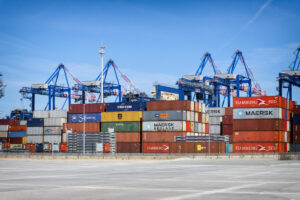The ongoing conflict between Russia and Ukraine has had a significant impact on the supply chain, shows latest data from FourKites – especially in the warzone where the safety of transportation is the top concern.
While shipments to Russia and Ukraine were down significantly in 2022, recent import volume data from the firm reveals that Ukraine’s supply chain is steadily improving while Russia’s supply chain is dramatically worsening.
The 14-day average Russian import volume has been down year over year since August. Most recently, the 14-day average import volume to Russia was down 96.2 per cent year over year.
Deliveries to Ukraine, while still behind from levels before the Russian invasion for most of 2022, have been on the rise in the past month. In the last two weeks, the average volume of imports to Ukraine was up by 14.3 per cent year-on-year.
READ: Shipping companies plead UN for release of seafarers trapped in Ukraine
Glenn Koepke, GM Network Collaboration at FourKites, shared his insights about the supply chain trends one year after the war began.
Koepke highlighted that most international companies have closed their operations and investments in the region as a result of the war. The disruption caused by the conflict has created a significant void that will take decades to rebuild post-war.
He added that it is unlikely that any stability can be regained in the year ahead. However, with the global spotlight shining on China and Russia and the US and Ukraine, supply chains could be in for a major overhaul.
When asked about the permanent changes to the global supply chain as a result of the war, Koepke noted that trade flow for over-the-road and rail cargo between western Europe and Belarus and Russia will have a long-term impact due to the sanctions, safety, and political impacts that trade would have.
In addition, routings via vessels will change in the Black Sea, a major strategic corridor for both import and export freight.
READ: MOL set to continue Russian ties
Turning to neighbouring countries, data from FourKites shows that shipments to bordering and other European nations increased.
The dwell times for ocean shipments in major European ports such as Rotterdam, Antwerp, and Bremerhaven have reduced since the peak that followed the Russian invasion of Ukraine in the previous year.
As of 26 February, the average dwell time for imports and exports in these ports was 5.6 days and 6.1 days, respectively, which is a decrease of 18.4 per cent and 36 per cent from the average dwell time of February last year.
Across all European ports, the dwell times for ocean shipments have decreased for both transshipments and exports. As of 26 February, the 28-day average dwell time for exports and transshipments was 7.1 days and 6.3 days, respectively, which is a reduction of 26.8 per cent and 28.4 per cent from the previous year.
The 28-day average dwell time for imports has slightly increased by 3.1 per cent from the previous year to 6.2 days.
The Port of Rotterdam handled 467.4 million tonnes in 2022, reflecting a marginal decrease of 0.3 per cent from 2021 when 468.7 million tonnes were handled.











